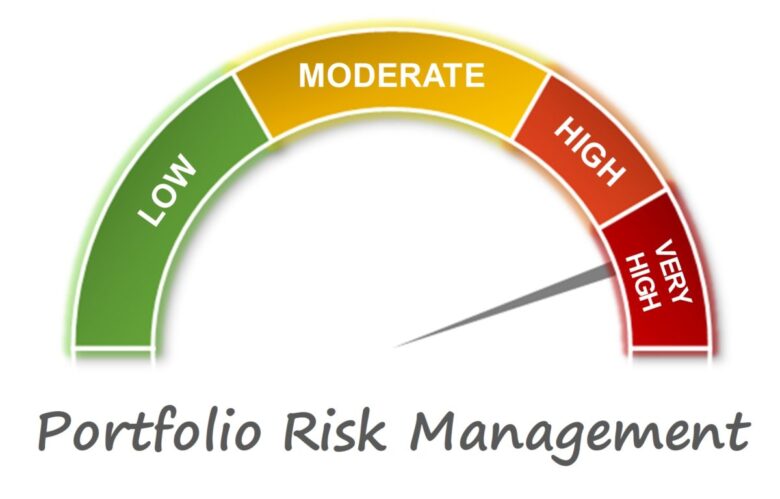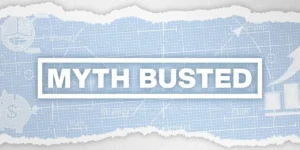Investing is an important part of building wealth and achieving long-term financial goals, but all investments involve risk. To ensure that your money is safe and secure, it’s important to understand how to properly manage risk in your investment portfolio. While you can’t eliminate risk entirely, there are ways to minimize its effects and make smart choices that align with your financial goals. By taking control of your risk management, you can ensure that your portfolio stays strong even when the market is down.
Understand Your Risk Appetite
To manage investment risk, you first need to understand how much risk you’re willing to take. This means that you’re able and willing to deal with changes in the value of your investments. Some investors are willing to take more risk for higher returns, while others prefer to play it safe. Your age, financial situation, investment goals, and comfort with market fluctuations all affect the amount of risk you’re willing to take. Understanding your risk appetite can help you choose investments that fit your personality and goals. This will help you avoid making hasty decisions when things are uncertain.
Clarify your Investment Goals
Having clear investment goals gives your portfolio a sense of direction and purpose. These goals could include saving for retirement, buying a home, paying for college, or simply getting rich. Choosing the right investment strategy is easier when you have a clear time frame and goals. Short-term goals may require safer, more liquid assets, while long-term goals may be more risk-tolerant. Clear goals can help you make decisions when the market changes and help you understand the current performance of your portfolio.
Diversify Across Asset Classes
Diversification is an effective way to reduce risk. You can invest your money in multiple asset classes, such as stocks, bonds, real estate, and cash, to reduce the impact of poor performance in one area. When one asset falls, another asset may rise, helping to manage the overall risk of your portfolio. Diversification not only helps keep your money safe, but it also provides more stable returns over the long term. By adding both domestic and foreign assets to your portfolio, you can make it more resilient to economic shocks in specific areas.
Rebalance Your Portfolio Regularly
As the market changes, the value of your investments can deviate from your original asset allocation. To maintain your desired allocation and risk level, you should adjust your investments regularly. This is called rebalancing your portfolio. For example, if stocks are performing well and are a larger part of your portfolio, you can sell some of your stocks and invest the money in bonds or other assets. By rebalancing your portfolio regularly, you can keep it in line with your risk appetite and avoid putting too much money into one type of investment, especially when markets are unpredictable.
Do Your Research
Smart investing means knowing what you are doing. You should do your research before adding an investment to your portfolio. Before you invest in a company, asset class, or fund, do your research and look at its performance, risk factors, management, and financials. Consult independent research, analyst reports, and market trends. Don’t fall for rumors or hot tips, as these can put you at risk and cost you money. The more you know about your assets, the easier it is to make choices that help you achieve your long-term goals.
Stop-loss Orders and Exit Strategies
A key part of risk management is protecting your money from big losses. One way to do this is by using stop-loss orders, which automatically sell a security when its price falls below a certain level. This helps you avoid making decisions based on emotion and reduces your risk. Knowing when to invest is just as important as having a clear exit plan. Before you sell an investment, make a plan for when you will sell. This could be because the investment is not performing well, your financial goals have changed, or the market is changing. These tips will help you stay disciplined and avoid selling too quickly when things are going badly.
Avoid Over-Concentration
Investing a large amount of money in one investment or sector makes you more vulnerable to risk. If one investment underperforms or suffers a loss, it can damage your entire portfolio. Investors tend to over-concentrate when they have too much confidence in a particular stock, sector, or trend. To reduce the risk of losing money in areas beyond their control, it is essential to diversify your investments across different asset types and sectors. A balanced portfolio protects you from losses in specific investments and ensures that you continue to pursue your investment goals.
Don’t Panic when the Market Fluctuates
Markets are inherently uncertain, and their values change rapidly. It is normal to be concerned when the market is volatile, but emotions can lead to poor decisions. If you sell during a recession, you will suffer losses and may not benefit from a later recovery. Staying calm and sticking to your long-term plan is one of the best ways to manage risk. Look at the big picture and your goals, and don’t adjust your portfolio based on short-term events alone. When things are uncertain, having confidence in your strategy can help you see the bigger picture.
Consider Seeking Professional Help
If you’re struggling with risk management or don’t know how to build a balanced portfolio, a financial advisor can help you do so and provide support. An advisor will help you determine your risk appetite, develop a personalized investment plan, and keep you informed about market developments. They will provide objective advice and help you avoid the mistakes that are often made based on feelings or lack of experience. It may come at a cost, but the value of expert advice is worth it, especially when it comes to protecting and growing your wealth.
Conclusion
To be financially successful in the long term, you need to manage the risk in your portfolio. By understanding your risk appetite, clarifying your goals, diversifying your asset allocation, and staying informed about investment developments, you can work toward significant growth while protecting your money. Investing involves a certain amount of risk, but with the right strategy, you can manage risk effectively to limit losses and maximize opportunities. Whether you are a beginner or an experienced investor, as long as you remain disciplined, analyze your portfolio regularly, and make adjustments as needed, you can navigate the financial markets confidently and safely.
FAQs
1. What is a stop-loss order?
A stop-loss order instructs you to automatically sell your investment if it reaches a certain price. This helps limit your losses.
2. Should I only invest in one area that I am familiar with?
It is better to avoid concentrating your investments too much. By spreading your money across multiple sectors, you can better manage risk and better absorb a decline in one sector.
3. When should I consult a financial advisor?
If you are unsure about your financial plan, do not have the time or knowledge to manage it, or are going through a major life change, you may want to consider hiring an advisor.
4. Should I liquidate my investments due to market volatility?
Not necessarily. You should stick to your long-term plan and not make judgments based on short-term market changes.
5. Why do you need an exit plan when investing?
An exit strategy can help you decide when to sell without letting emotions dictate your investments. It can also help you limit losses when the market performs poorly.




